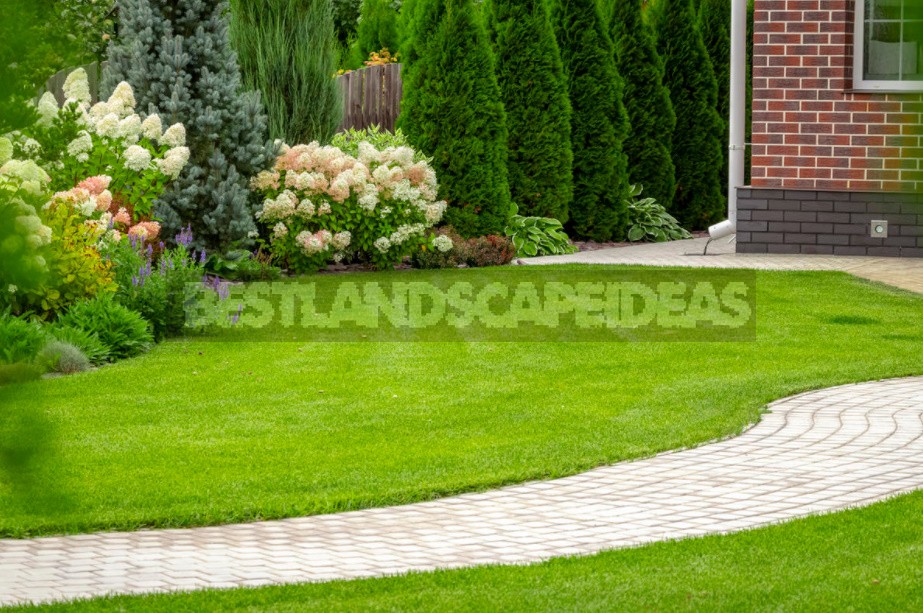
When purchasing an uncultivated plot, you should immediately think about the location of garden paths, and how they should be arranged. It is necessary to decide on these issues before the start of landscaping work. Especially if you want to do everything with your own hands.
Capital tracks
Land surveyors divide garden and park paths and playgrounds into 3 categories. The first category includes paths and platforms with a solid monolithic base. Usually they are built where a large load is provided. Operators call them “capital”, meaning that they must serve without major repairs for at least 10 years.
Paths and platforms of the first category on garden and cottage plots are made seriously and for a long time. They are usually laid in the entrance area at the entrances and gates. Often, when such paths are made at the retaining walls of terraces and embankments, they perform the function of additional strengthening of the soil.

When they are constructed, they dig out a bed with a depth of about 15 cm. In places of its lowering, that is, where stormwater or flood water will accumulate, provide drainage (otherwise, the track in this place may break). It is advisable to lay out the bed with a road geotextile with a density of 150-200 g/m2.
Sand is poured, leveled and rammed so that the height of this drainage layer is about 5 cm. Geotextile is put on the sides of the bed. If it is not used, then the sides of the bed are framed with a border tape, cut into ribbons with old linoleum or roofing material.
Usually, the concrete base is poured at the final ground level, taking into account the bulk fertile soil for the lawn. If you want to significantly raise the track, then use strips of plywood or boards as the formwork. The concrete base itself is either reinforced to avoid rupture, or thermal seams are arranged in it after 1.5-2 m. The second is cheaper, but there is a danger that in the spring the concrete slabs will rise or sink relative to each other.

Reinforcement is carried out with bars with a diameter of 5-8 mm or road maps of a welded mesh with dimensions of 0. 5×2 m from a bar with a diameter of 5 mm with a cell of 10 cm. The reinforcement is placed on stands- “chanterelles” – pieces of bricks or stones with a height of 3-5 cm, so that after pouring the reinforcement was in the thickness of concrete.
The batch of concrete is poured into the bed, leveled and rammed. Where it was not enough, install a crossbar made of a board so that the concrete ends in a smooth “cut” without inflows. When pouring a new batch of mortar, the crossbar is removed.
So gradually fill the entire base.After the mixture has solidified (usually after 3-5 days), a decorative coating (paving slabs, natural stone, paving stones) is laid and, if necessary, a curb is made.
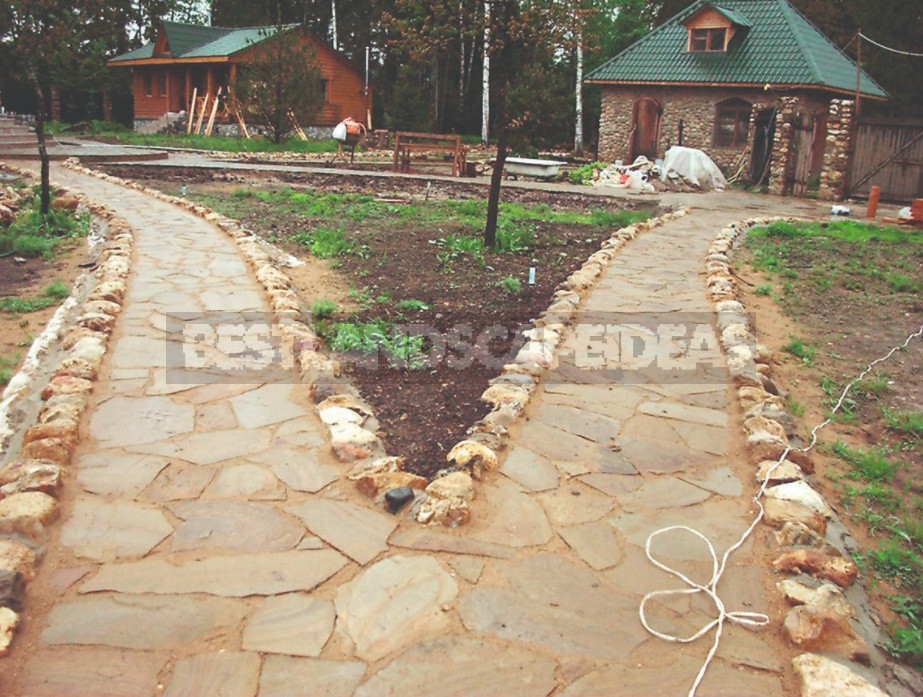
Natural stone-flagstone-in one batch can vary in thickness by 3-8 mm, and the cheapest flagstone is sold generally uncalibrated. Therefore, it should be pre-sorted by thickness. Laying is carried out on a strong masonry cement-sand mortar, reinforced with a steel mesh.
Ignoring these procedures sooner or later leads to chipping, cracking and falling out of the flagstone. Mount the stone so that the surface of the track is smooth, without hooks and differences, leaving gaps between the coating elements of at least 1 cm. Subsequently, they are filled with a cement-sand solution with the addition of glue or a special adhesive composition.
Depending on the quality of the natural stone, the weakest point to a greater or lesser extent is its ends. Therefore, the use of adhesive mixtures when filling joints allows you to strengthen the end surfaces of the flagstone.
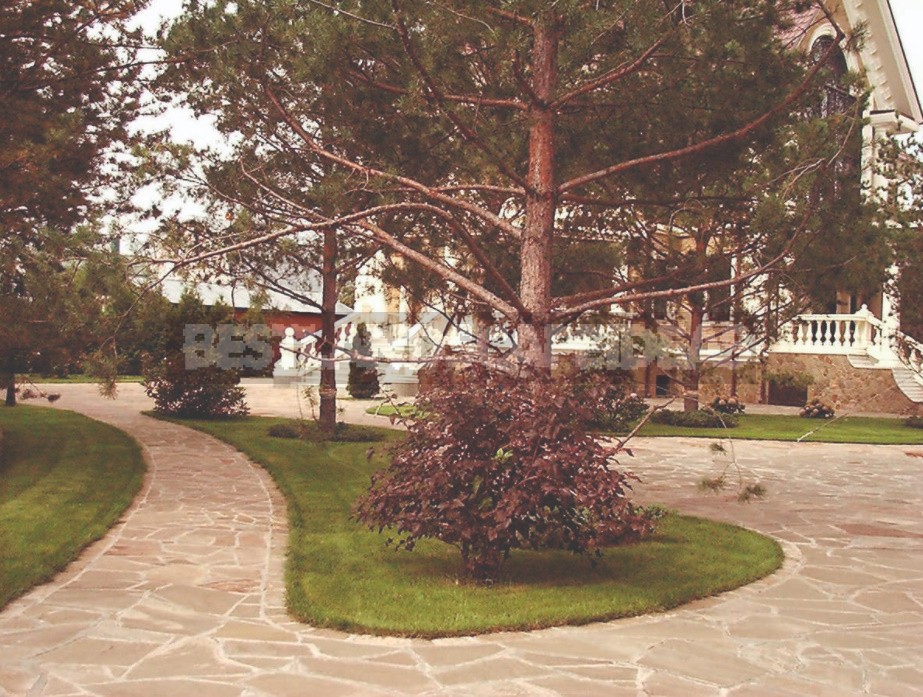
Paving slabs can be clinker, ceramic or porcelain stoneware. Put it on a cement-sand or special adhesive solution. Although the instructions do not specify the need for reinforcement of the surface when laying thin tiles, it will still not be superfluous to do this in our climate.
Backfill tracks
The second category is traditional paths with a backfill foundation in already cultivated garden plots. Just as in the first version, dig out the bed, but at a lower depth-about 10 cm. The bottom and sides of the bed are covered with geotextile with a density of 150-200 g/m2 — it does not break through the roots of herbaceous plants.
The sides of the bed can be further strengthened with a curb tape. All the bed (according to the level of the soil) is covered with crushed stone (only not lime!), pebbles, cinder screening, etc.As decorative elements, you can lay individual paving slabs, processed scraps of wooden beams, flagstone stones. These elements are buried in the backfill layer, and they should not rise above the track and above the soil.
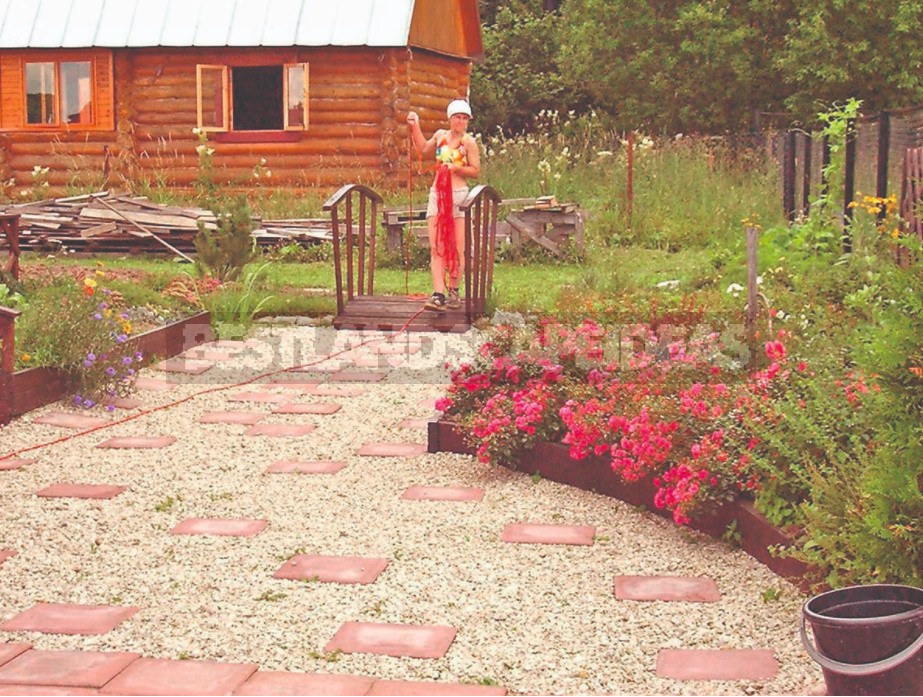
Decorative coating (paving slabs, flagstones) is usually laid above the ground level, the edges are fixed with a curb. When constructing the “Swiss trail” (1 step — 1 stone), a sand cushion is poured under each stone. If you make a path with a natural stone coating of the “Swiss trail” type (a ribbon of stones matched to each other), then the flagstone as a mosaic is laid at the soil level on a sand cushion filled in the bed, leaving seams about 1 cm thick. The seams are covered with sand (filling with a sand-cement mixture in this case also does not make sense) and sown with dwarf lawn grass. In this case, the curb is not installed.
Garden paths
Finally, the third category of paths — garden trails. As the name implies, these paths are trodden by feet, compacted by the wheels of a wheelbarrow or car. The ground here is dense, usually sagging, collecting storm water, that is, a potential puddle. And your task is to make a path out of a puddle.
To do this, first of all, it is necessary to ensure the removal of standing water. Pits and mounds are leveled, if necessary, pour the soil. For filling, take the discarded earth, taken out when digging the foundation or well. If it is clay, then it is lightened by adding the necessary amount of sand. The trail itself should be raised and compacted somewhat.
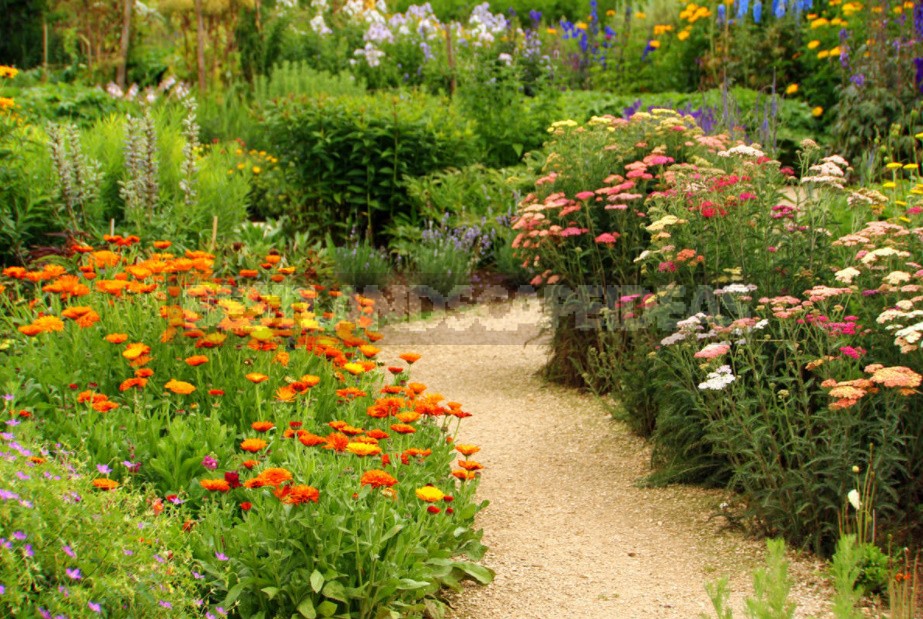
It is filled with sand or crushed stone, which is driven in with a rammer. As a border, soil-strengthening plants are used: white clover, lupines, low spirea bushes, etc. or break a mixborder. Since trails are the cheapest to make, it is not surprising that they are easily destroyed in heavy rains or meltwater runoff. Therefore, constant filling and ramming of the soil, along with strengthening the borders with plants, allows you to keep the garden paths in good condition.

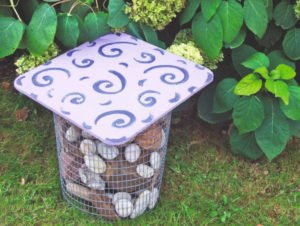


Leave a Reply